SCP0038
Amyloid β 1-42 rat
≥90% (HPLC)
Sinónimos:
β-Amyloid 1-42, Amyloid for Rat, Rat Amyloid β 1-42
Iniciar sesiónpara Ver la Fijación de precios por contrato y de la organización
About This Item
Fórmula empírica (notación de Hill):
C199H307N53O59S1
Peso molecular:
4417.95
Código UNSPSC:
12352200
NACRES:
NA.32
Productos recomendados
Ensayo
≥90% (HPLC)
Formulario
lyophilized
composición
Peptide Content, ≥75%
condiciones de almacenamiento
protect from light
temp. de almacenamiento
−20°C
Categorías relacionadas
Amino Acid Sequence
Asp-Ala-Glu-Phe-Gly-His-Asp-Ser-Gly-Phe-Glu-Val-Arg-His-Gln-Lys-Leu-Val-Phe-Phe-Ala-Glu-Asp-Val-Gly-Ser-Asn-Lys-Gly-Ala-Ile-Ile-Gly-Leu-Met-Val-Gly-Gly-Val-Val-Ile-Ala
Descripción general
Amyloid β (Aβ) 1-42 is the major Aβ species in the amyloid plaques that develop in the case of Alzheimer′s disease (AD). It has a cross-β structure with parallel, in-register β-sheets.
Aplicación
Amyloid β 1-42 rat has been used as an amyloid β (Aβ) oligomer in intracerebroventricular (ICV) injection/intra-hippocampal infusion to establish the Alzheimer′s disease (AD) model in rat.
Acciones bioquímicas o fisiológicas
Amyloid β 1-42 forms amyloid fibrils more readily compared to Aβ(1–40), in vitro. Aβ1-42 injections are known to cause brain dysfunction indicating learning and memory deficits. Amyloid β (Aβ) refers to peptides derived from amyloid precursor protein that vary in length from 37–43 amino acids. Aβ(s) peptides, their peptide fragments, and mutated fragments are used to study a wide range of metabolic and regulatory functions including activation of kinases, regulation of cholesterol transport, function as a transcription factor, and regulators of inflammation. Aβ(s) peptides and their peptide fragments are also used to study oxidative stress, metal binding, and mechanisms of protein cross-linking in the context of diseases such as Alzheimer′s disease and neurodegeneration.
Código de clase de almacenamiento
11 - Combustible Solids
Clase de riesgo para el agua (WGK)
WGK 3
Punto de inflamabilidad (°F)
Not applicable
Punto de inflamabilidad (°C)
Not applicable
Elija entre una de las versiones más recientes:
¿Ya tiene este producto?
Encuentre la documentación para los productos que ha comprado recientemente en la Biblioteca de documentos.
Los clientes también vieron
Jing Wang et al.
Molecular medicine reports, 23(6) (2021-04-22)
Ginkgolide B (GB), the diterpenoid lactone compound isolated from the extracts of Ginkgo biloba leaves, significantly improves cognitive impairment, but its potential pharmacological effect on astrocytes induced by β‑amyloid (Aβ)1‑42 remains to be elucidated. The present study aimed to investigate the
Enes Akyuz et al.
Biomedicines, 8(3) (2020-03-19)
Alzheimer's disease (AD) is a progressive neurodegenerative disorder with a complex etiology and characterized by cognitive deficits and memory loss. The pathogenesis of AD is not yet completely elucidated, and no curative treatment is currently available. Inwardly rectifying potassium (Kir)
Volodymyr A Yavorsky et al.
Frontiers in cellular neuroscience, 17, 1132092-1132092 (2023-05-01)
One of the signs of Alzheimer's disease (AD) is the formation of β-amyloid plaques, which ultimately lead to the dysfunction of neurons with subsequent neurodegeneration. Although extensive researches have been conducted on the effects of different amyloid conformations such as
Raheleh Farahzadi et al.
ACS chemical neuroscience, 11(10), 1424-1435 (2020-04-21)
Mesenchymal stem cells (MSCs) are of particular interest because of their potential in regenerative medicine. Stem cell-based therapies cast a new hope for neurodegenerative disease treatment as a regeneration strategy, including treatment for Alzheimer's disease (AD). A multitude of cytokines
Ruo-Meng Li et al.
Neural regeneration research, 18(6), 1347-1353 (2022-12-02)
Previous studies have shown that fibroblast growth factor 13 is downregulated in the brain of both Alzheimer's disease mouse models and patients, and that it plays a vital role in the learning and memory. However, the underlying mechanisms of fibroblast
Nuestro equipo de científicos tiene experiencia en todas las áreas de investigación: Ciencias de la vida, Ciencia de los materiales, Síntesis química, Cromatografía, Analítica y muchas otras.
Póngase en contacto con el Servicio técnico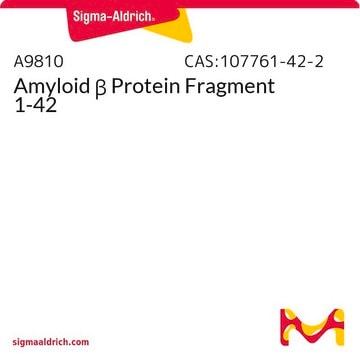
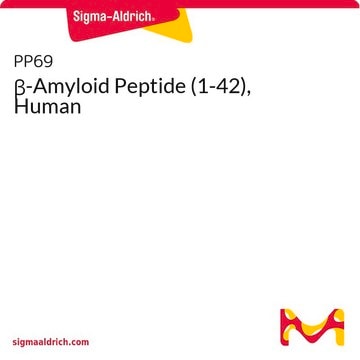

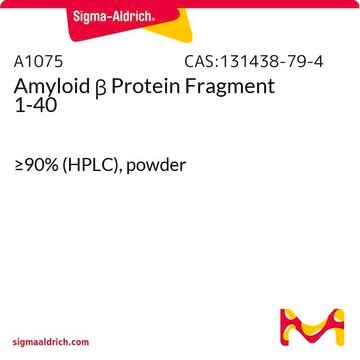

![[Gly22]-Amyloid β 1-42 Arctic human](/deepweb/assets/sigmaaldrich/product/images/222/254/58bfa018-4218-48a8-957d-f4d67366a533/640/58bfa018-4218-48a8-957d-f4d67366a533.jpg)
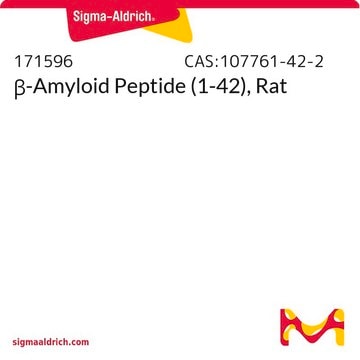
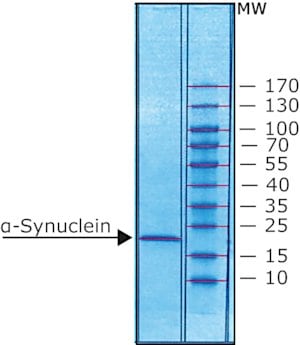

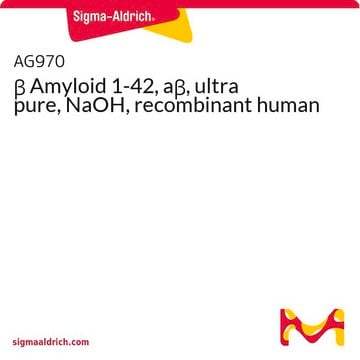

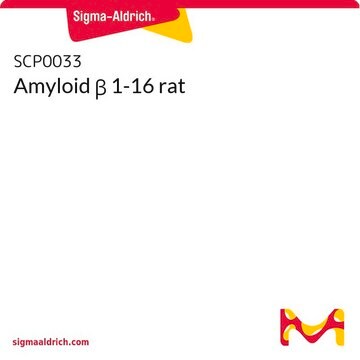
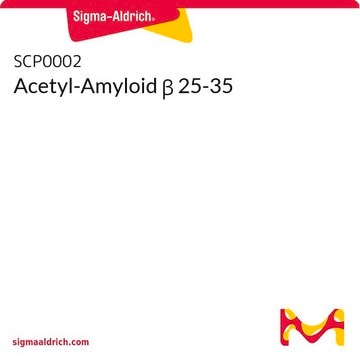


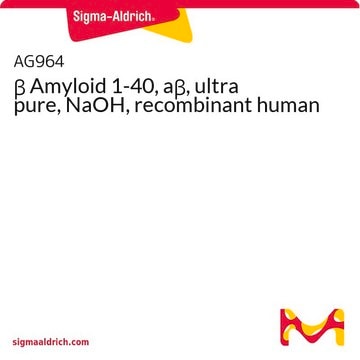
![[Ala28]-Amyloid β 25-35 ≥95% (HPLC)](/deepweb/assets/sigmaaldrich/product/images/306/938/dd9f7c72-cfca-4ea3-8e10-a7a2a7994639/640/dd9f7c72-cfca-4ea3-8e10-a7a2a7994639.jpg)